Appledore Lifeboats
There have been dedicated lifeboats at Appledore since 1824. The entrance to the Taw and Torridge Estuary is one of the most dangerous in the country, and approximately 2,000 sailors’ lives have been lost within sight of it over the centuries. Three lifeboat stations existed in Victorian times:
No.1 Station – Northam Burrows (closed 1897, demolished 1913)
No.2 Station – Badstep, Appledore (now the main lifeboat station)
No.3 Station – Braunton Burrows (constructed 1862, closed 1919)
A total of 11 lifeboats were housed in these stations at various times, up until 1885 when a new boat arrived…
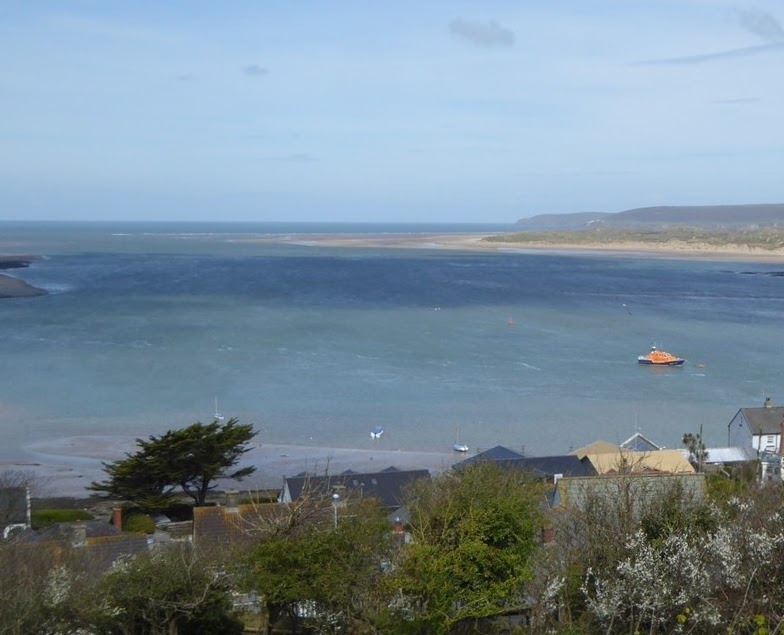
Jane Hannah MacDonald I
The new arrival was called the Jane Hannah MacDonald – the first of three boats that was to bear the name of her patron. She was 34’3” long, 7’6” wide, and was manned by 10 oars. She was the gift of Mrs MacDonald of Brighton, at a cost of £300. She was self-righting, and in testing it was found that she could right herself within six seconds from a fully overturned position.
That vessel had 22 years of service, undertook 28 launches, and saved a total of 21 lives.
By 1907, she had become decayed, failed her survey, and was broken up the following year.
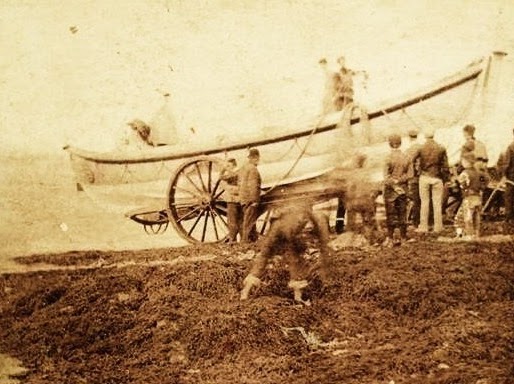
Jane Hannah MacDonald II
In 1907, a temporary lifeboat was borrowed from Clovelly – she was called the Elinor Roget, but at Appledore she was renamed the Jane Hannah Macdonald II in honour of her predecessor.
Meanwhile, the lifeboatmen of Appledore were allowed to select the type of boat to have as a replacement. They scoured the country looking for the best boat, venturing as far as Ballantrae in Scotland. Eventually a boat of the right design was found at Lynmouth, so a copy was ordered based on her design.
Jane Hannah MacDonald III
The Jane Hannah MacDonald III arrived in 1910. The vessel was built in 1909 at the Thames Ironworks and Shipbuilding Company, Blackwall. She was slightly larger than the earlier boat, at 35’0” long and 8’6” wide.
She cost £931. Especially for Appledore, she had the words “Jane Hannah MacDonald” painted on her bows, and “Appledore Lifeboat No.1” painted on her stern.
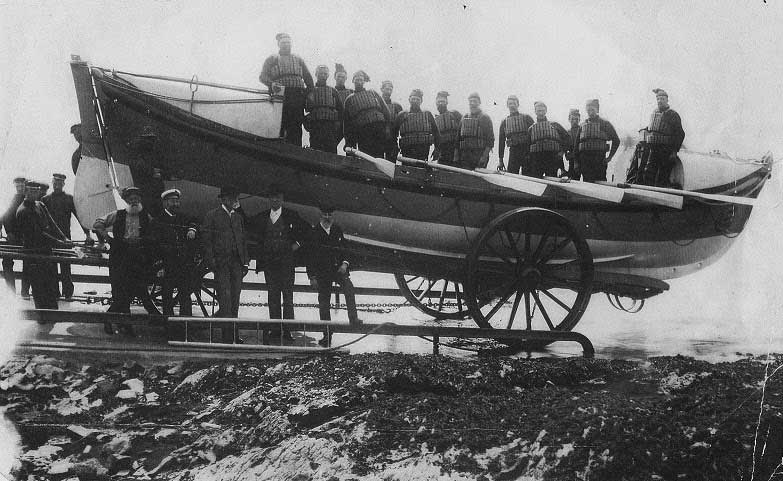
Specifications
- Construction
Mahogany on oak planks with calico between, corked in double diagonal
- Weight
4 tons
- Features
Unsinkable, self-righting and self-bailing
- Relieving tubes
8, each 6” in diameter
- Keels
2 drop keels, weight 1 cwt 22 lbs, each 5 feet in length
- Forward keel
2’0” drop, aft keel 1’10” drop
- Keel depth
6½” (2½” being wood and 4½” iron)
- Keel width
5”
- Water ballast tanks
2
- Draught (light)
17¼” fore, 20¼” aft
- Draught (with crew)
22” fore, 25½” aft
- Oars
5 pairs
- Masts
2, for lug-rigged sails
- Production number
‘TL56’ (carved on her bow)
- RNLI registered number
611
On 5th May 1910, the Jane Hannah MacDonald III arrived by train from London on a specially adapted rail bogey. She was placed on a carriage and drawn by 6 horses across Bideford Bridge, and then on procession around Bideford, accompanied by the Yeomanry, the Band of the Territorials, the Lads Brigade, the Appledore Naval Lads Brigade and the Boy Scouts. Large crowds gathered around the route to welcome her.
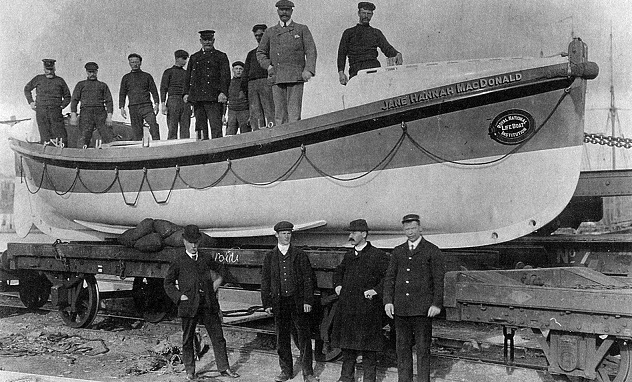
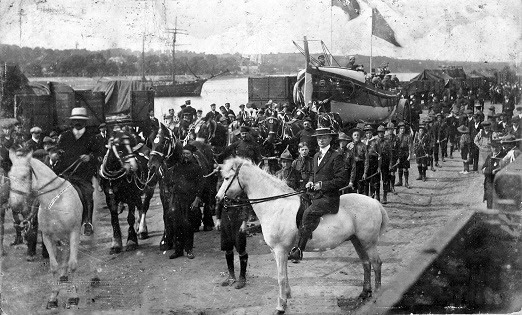
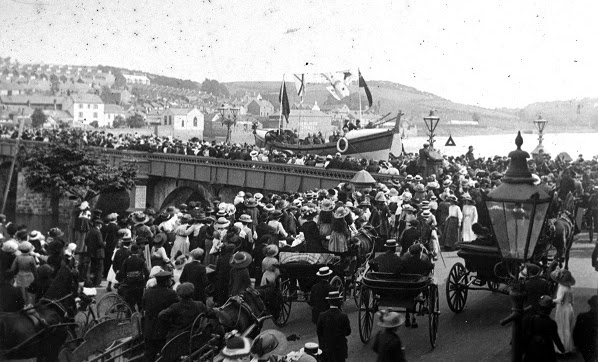
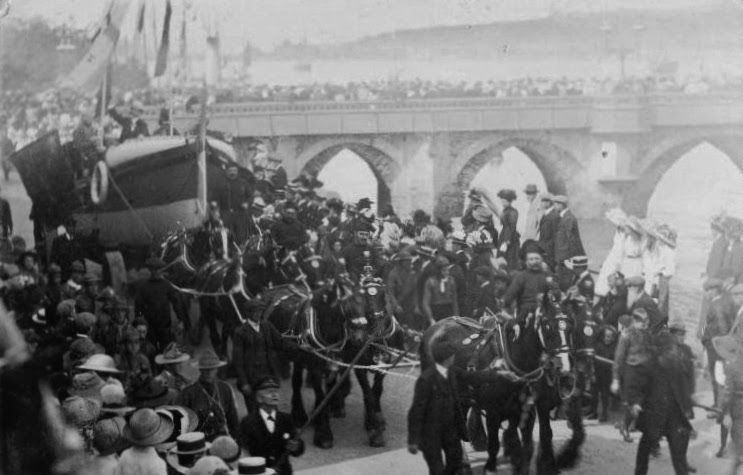
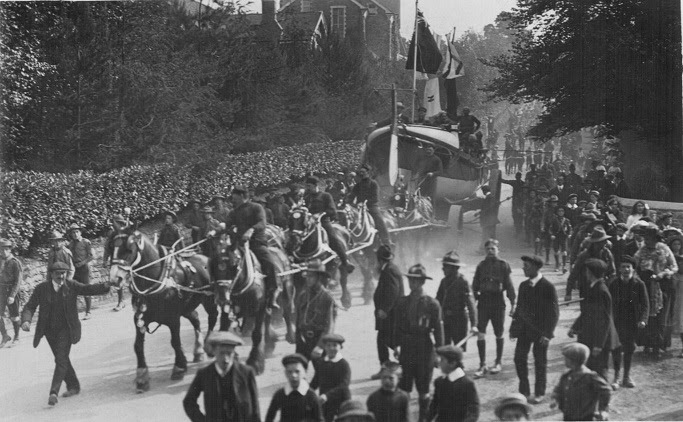
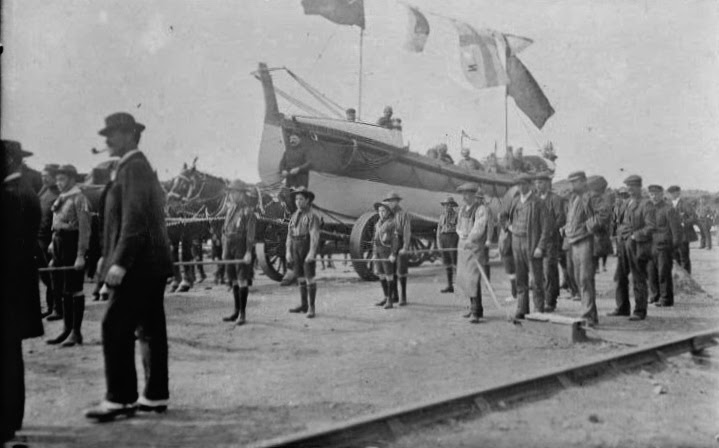
Sadly, the following day, King Edward VII died, and the planned ceremonies had to be cancelled. The new boat was kept on Bideford Quay for a few days, before being sailed down to Appledore, awaiting a suitable occasion when she could be officially named and launched.
The Jane Hannah MacDonald III was eventually named and launched on 31st August 1910, as the closing event of the Bideford Regatta. The weather was dull, but huge crowds gathered to witness the full schedule of races which took place. A special launching platform was erected on the Quay, with admittance by ticket only.

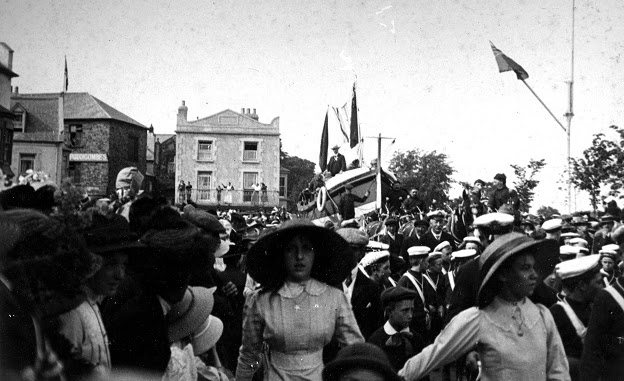
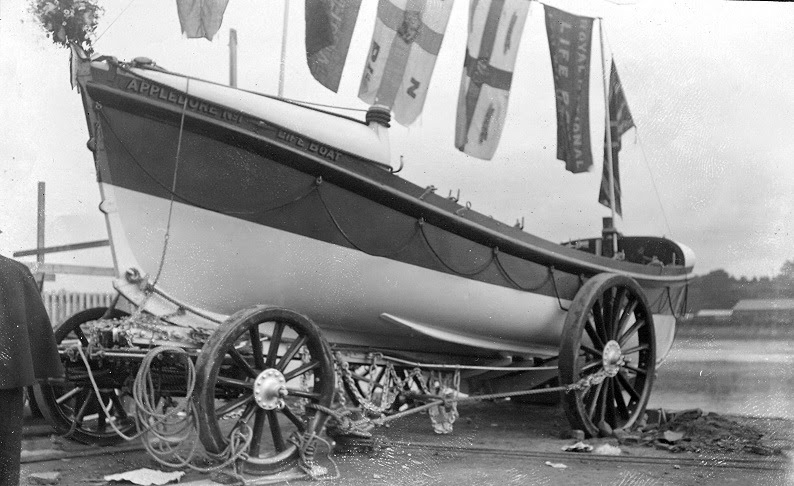
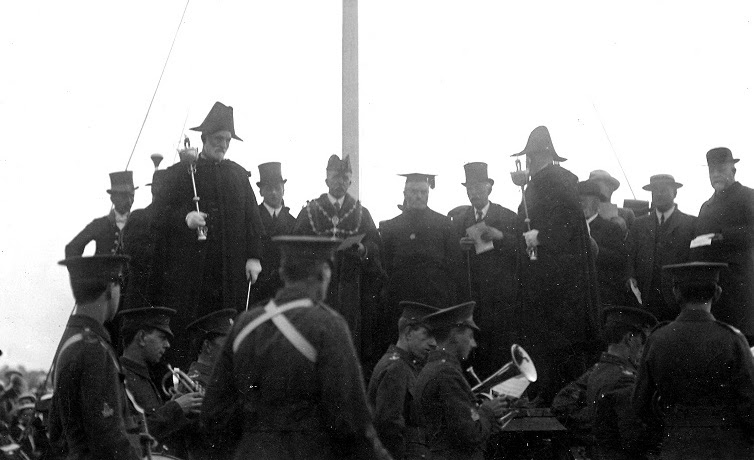
At 3:30pm the lifeboat was presented to the local committee by Lieut. Basil Hall the Inspector of Lifeboats. He said that he did not believe that there were finer crews and braver-hearted men on the coast, than could be found in Appledore.
The vicar of Northam, the Rev’d M.D. Dimond Churchward blessed the lifeboat in front of a vast crowd, and the Territorial Band and church choirs led the singing of a hymn.
The naming ceremony was carried out by Lord Clifford of Chudleigh with the words “May God bless and watch over thee and all who sail in thee, and those whom thou goeth forth to save”.
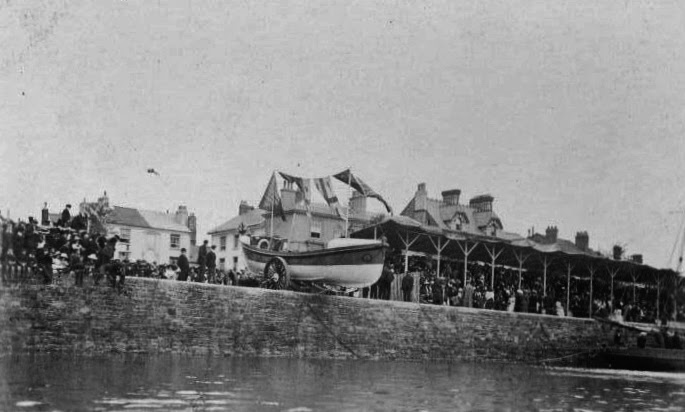
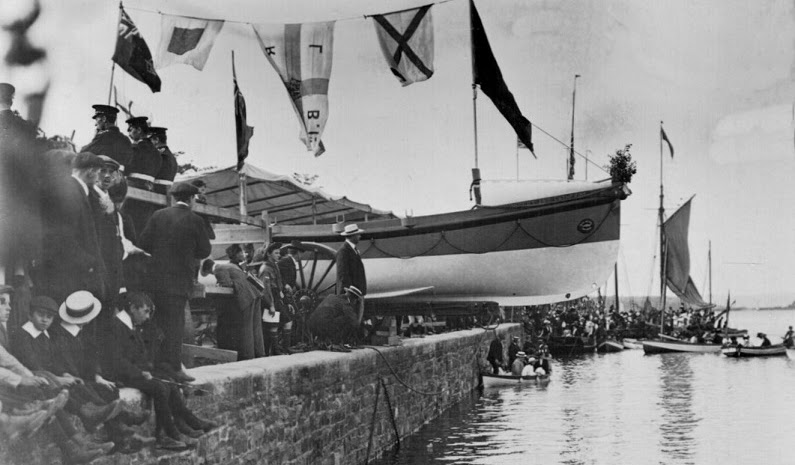
With tumultuous cheering a bottle of champagne was broken over her bows and the boat was tipped off her carriage into the River Torridge. She entered the water with flags flying from her bow and stern fluttering in the breeze. The lifeboat crew boarded the lifeboat from their gig, after which the dignitaries got into the boat for a short cruise along the river.
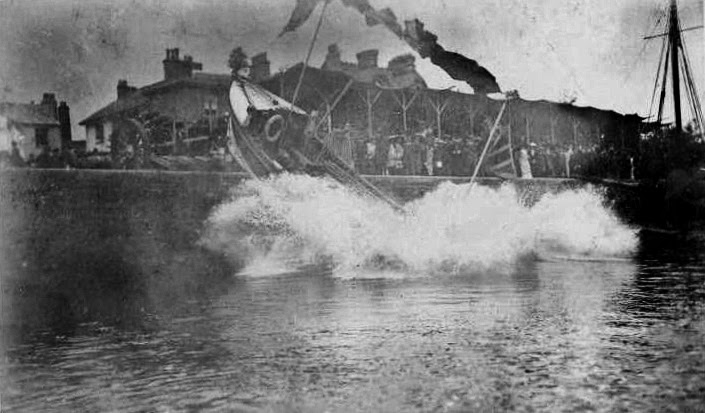
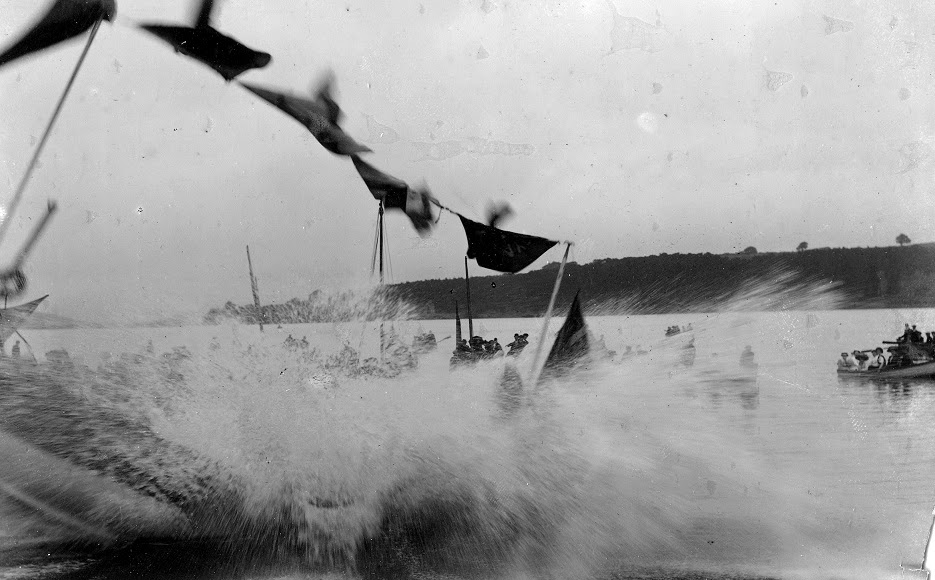
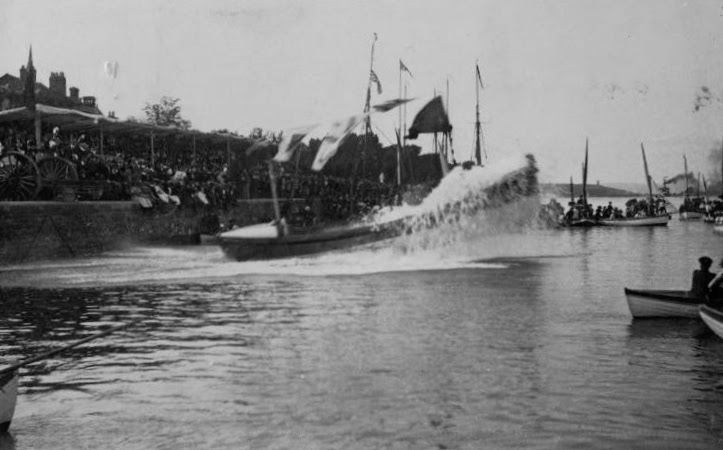
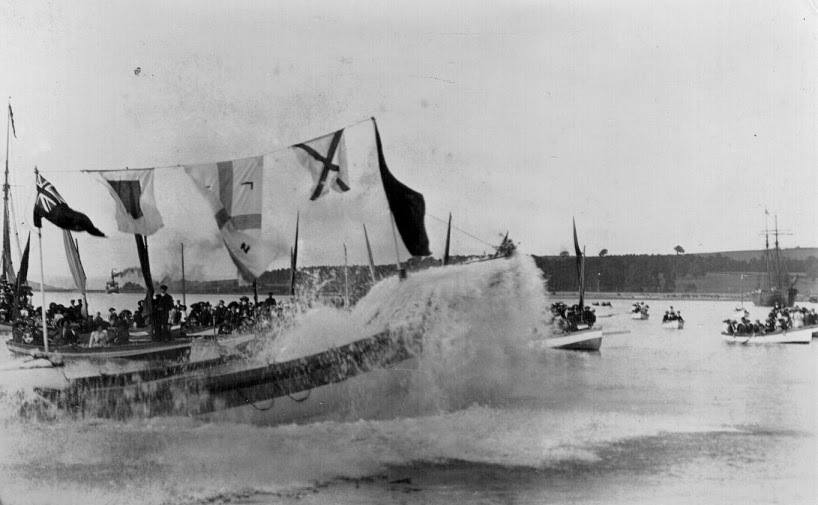
The crew that manned the boat that day were Robert Batten (coxswain), Richard Berry (2nd coxswain), Philip Berry (bowman), Philip Williams, Richard Cann, Walter Ford, John Randall, Steven Bignell, Arthur Evans, George Powe, Isaac Craner, George Day and George Craner.
On 6th June 1914, Jane Hannah MacDonald visited Barnstaple as part of her quarterly practice exercises, and a great many people turned out to watch.
Many years have elapsed since there was a similar demonstration at Barnstaple, and the work of ‘life-saving’ with the breeches buoy, etc, was closely followed by thousands of persons who lined the river banks and the Long Bridge. Coxswain G Craner was in command of the crew of thirteen.
Western Times, 8th June 1914, page 2
Service Record
Even before being dedicated and launched, the Jane Hannah MacDonald III undertook service on 22nd August 1910 when she was asked to assist with swimmers in difficulty at Croyde. Under sail and oars, she got from Appledore to Croyde Bay in just 38 minutes, not helped by the fact that there was only just enough water to get over the Bar. Sadly, they were still not in time to save one of the bathers, and 32-year-old Charles Pochin visiting from Manchester with his wife and family, unfortunately drowned.
The Jane Hannah MacDonald III served the main Appledore Lifeboat Station from the date of her launching until November 1922, saving 23 lives in the process.
- Her first official service was on 13th Dec 1912, when she went to the assistance of the schooner Katie of Caernarvon, which was driven ashore on Saunton Sands. Two crew members were taken off.
- Lives were saved from the Comet in 1913, the Surprise in 1917, and the Volant in 1918.
- In 1920 she had her busiest year, saving four lives from the Emma Louise, ten lives from the Mayals, three lives from the Amazon, and two lives from the Annie, all in separate incidents.
She was replaced at Appledore on 23rd August 1922, having made 21 launches.
By 1920, lifeboats powered by oarsmen were becoming a thing of the past. They had limited capability, and required a fit strong crew to man them – something which had proved almost impossible during the First World War.
In 1922, a new motorised lifeboat arrived – she was called the V.C.S. The old Jane Hannah MacDonald III was kept on station until November 1922, after which she was placed in the RNLI reserve fleet.
Adopted by Appledore…
The boat was so well kept by the lifeboatmen of Appledore, that her name entered colloquial usage. If someone was arrayed in their finery, they were said to be “all dressed up like some Hannah MacDonald”.
Who was Mrs Jane Hannah MacDonald?
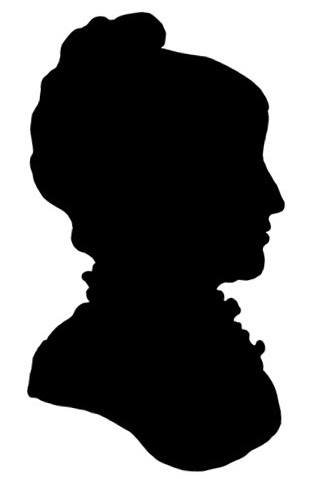
Mrs MacDonald’ was born in 1816 as Jane Hannah FRIEND in the Mile End Road in Whitechapel, the daughter of James FRIEND a sugar refiner. Her father died three years after she was born. She went on to have three husbands, but no children.
- In 1838 she married Friend WILLIAMSON a gentleman of Woburn Square, London. He was later described as a tobacco merchant and landed proprietor. He died in 1866.
- In 1866 she married John MacDONALD a gentleman of Westminster, the son of a merchant. He was 8 years younger than Jane.
- In 1891 she married William Brandon St QUINTON at Folkstone in Kent. He was said to be aged 50 (but was actually aged 42), she was said to be aged 60 (but was actually aged 75!)
Throughout her life she can be seen living at: Upper Bedford Place in London, Moredon in Surrey, Porchester Terrace in Paddington, Brompton in Kensington, The Grand Hotel in Brighton, Wimbledon, and Newgate Hill.
She was a shareholder in the Great Western Railway, funded the building of the Williamson Cottage Homes at Hove in memory of her first husband, and made other endowments for those in need, including the RNLI.
She died in 1897 at the Queens Hotel in Hastings, although her residence at the time was said to be The Alexandra Hotel, Hyde Park Corner, London. Her personal effects were valued at £7,667,14s.0d.
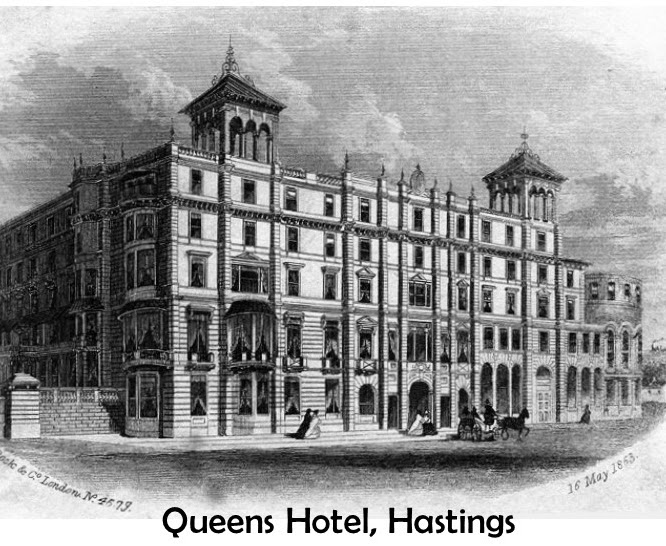
After Appledore…
After leaving Appledore, the Jane Hannah MacDonald III served in Eastbourne as No.2 Lifeboat from January 1929 to April 1930, but was never launched.
Between 1933 and 1938 she was sent to Flamborough in Yorkshire where she only took part in three launches. On one occasion she was holed when going down the slipway, hitting a rock that had been washed up during a storm. In 1938 the Flamborough Station was closed and the vessel was sold out of RNLI service.
She was then bought by Mr Cann of Whitley Bay and registered as a fishing boat in April 1940.
The following month (May 1940) she took part in Operation Dynamo, when over 300,000 allied forces were rescued from Dunkirk in the ‘Little Ships’ evacuation. She didn’t escape without damage though, as one of her stern posts was ripped out.
She was repaired at Broxbourne in Hertfordshire, before being returned to Blakeney in Norfolk. In 1953 she suffered extreme damage to her port side during the Norfolk floods, when she was dashed against a stone wall. She was repaired and used as a pleasure craft, but subsequently held in storage until 1992.
She was then taken to Migennes in France and stored for restoration by a lifeboat enthusiast.
In June 2020 she returned to Bideford, having been purchased and transported back by a group of local enthusiasts.
Restoration
Despite all her scars and life of service, she remains as an intact hull with distinct end boxes. Considerable repair is needed: the internal structural and deck levels require reconstruction in addition to all metal work, ropes and sail rigging. A restoration project is planned for her.
For more information about the vessel, see the National Historic Ships site.
History and text by David Carter 2020
Support Us
Join the AMHT to help save this great example of Appledore Maritime Heritage.
